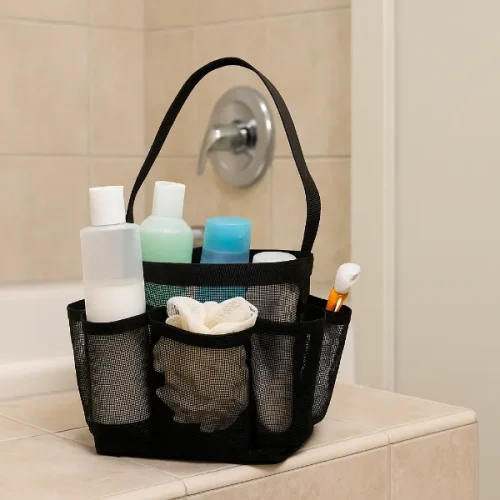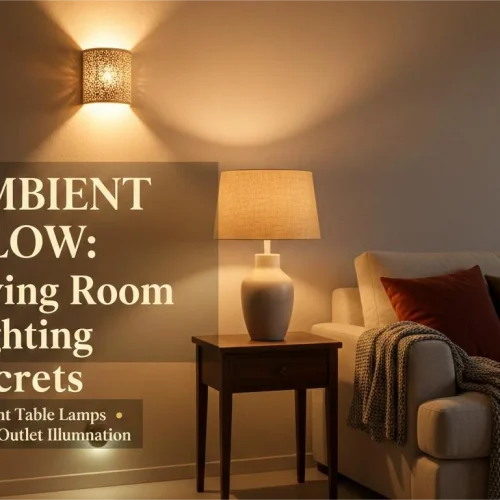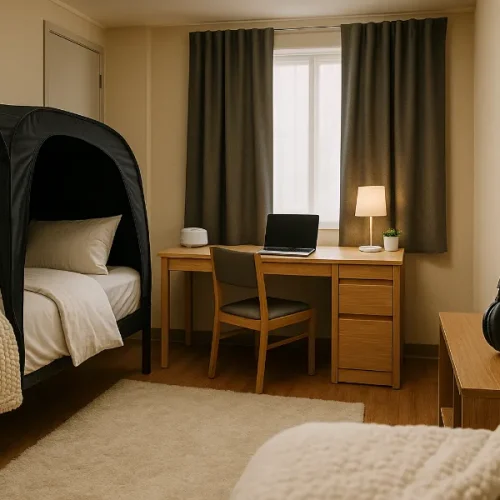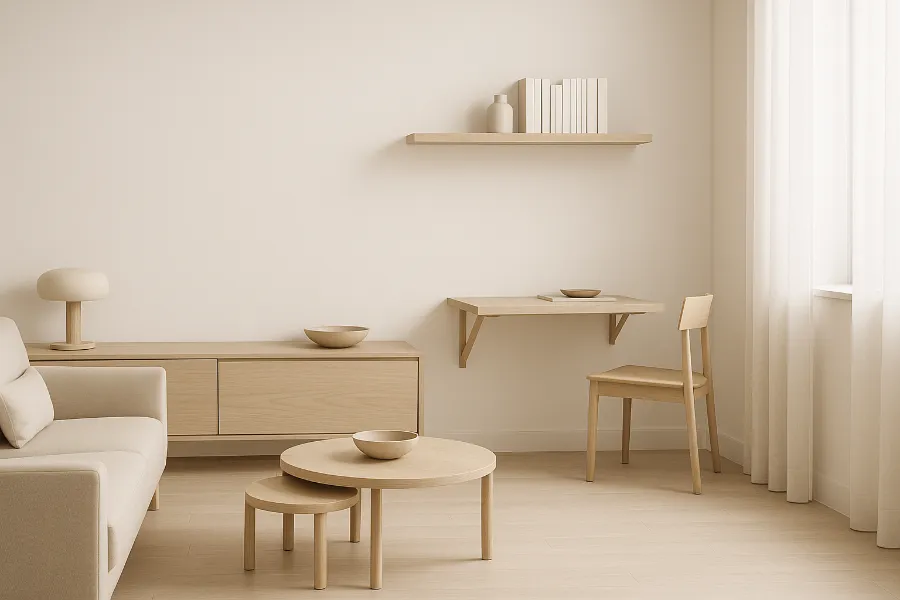
Small apartments, compact bedrooms, and shared living arrangements are becoming more common as people look for affordable housing, convenience, and simpler living. But living in a smaller home doesn’t mean sacrificing comfort or personality. With the right furniture choices, even the smallest spaces can feel spacious, organized, and welcoming. Cost-effective space-saving furniture focuses on multipurpose use, smart storage, and flexibility so that every item contributes to the overall function of the home.
Space-saving furniture helps reduce visual clutter, makes rooms feel more open, and creates a layout that adapts to everyday life. Instead of thinking of a room as having only one purpose, furniture can allow a space to shift depending on the time of day or activity. The goal is to combine comfort, efficiency, and style in a way that fits your lifestyle.
Core Principles of Space-Saving Design
1. Multi-functionality
Furniture that serves more than one role eliminates the need for extra pieces. For example, a sofa that transforms into a bed or an ottoman that stores blankets helps maximize space while reducing clutter.
2. Vertical Space Usage
Walls, shelves, and tall furniture help free up floor space. Using vertical storage keeps belongings accessible while preventing the room from feeling crowded. The U.S. Environmental Protection Agency notes that organized, efficient layouts can improve indoor comfort and home livability.
3. Flexibility and Movement
Light, foldable, or mobile furniture allows rooms to adapt to different activities. A kitchen may become a work-from-home office, and a living room may become a sleep space for guests.
4. Hidden and Disguised Storage
Storage that is built into furniture helps maintain a neat and open environment. Hidden storage reduces visual noise, which is crucial in small spaces.
These principles form the foundation for selecting furniture that enhances living comfort without overcrowding.
Storage Beds and Under-Bed Organization
Beds take up significant floor space, so maximizing the area underneath them is one of the most effective space-saving strategies. Storage beds come with built-in drawers or lift-up platforms, making it easy to store clothing, bedding, or seasonal items. If upgrading isn’t possible, bed risers create space for rolling bins or vacuum-sealed storage bags.
To maintain freshness and prevent allergens, choose breathable containers and avoid storing items sensitive to heat or humidity.
Drop-Leaf and Gate-Leg Tables
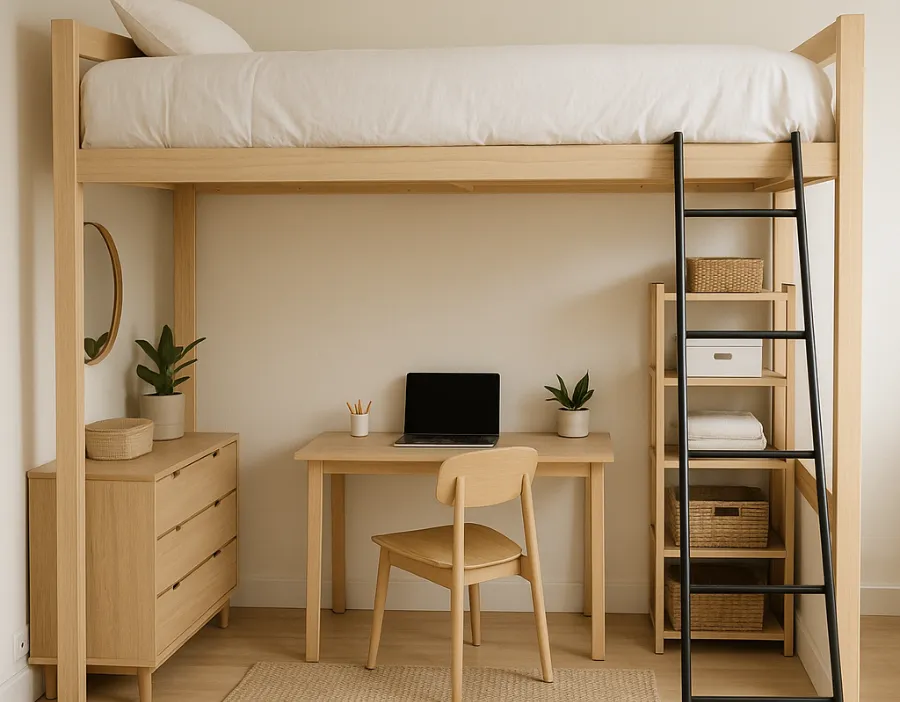
A full dining table can overwhelm a small room. Drop-leaf and gate-leg tables expand when needed and fold back when not in use. This is perfect for studio apartments, small kitchens, or living rooms that serve multiple functions. When folded down, some of these tables can double as side consoles or decorative shelves.
This allows you to have dining or workspace options without dedicating permanent floor space.
Convertible Sofa Beds and Futons
Convertible sofas offer seating during the day and sleeping space at night, replacing the need for a separate bedroom in very small layouts. Modern sofa beds and futons have improved dramatically in comfort and design, some even including built-in storage compartments for pillows and linens.
This is ideal in:
- Studio apartments
- Guest rooms used for multiple purposes
- Small living rooms where flexibility matters
Wall-Mounted Desks and Fold-Down Workstations
Work-from-home setups often require dedicated desk space, but a full-sized desk can dominate a small room. Wall-mounted desks and fold-down tables create functional work surfaces that disappear when not in use. Some versions include shelves for office supplies, making them efficient and unobtrusive.
Pairing a foldable desk with a lightweight chair keeps the room flexible.
Nesting Tables and Stackable Seating
Nesting tables offer multiple surfaces without taking up extra space. They slide under one another when not in use and separate when needed. Stackable stools and chairs offer the same advantage, especially for hosting guests.
This approach helps maintain floor space while still supporting social gatherings.
Modular Shelving and Cube Storage
Modular shelving is adaptable, customizable, and easy to expand as needs change. Cube-style shelving is especially useful for small homes because it works with fabric or wicker bins that hide clutter. It can also function as a room divider in open layouts like studios.
Maintaining consistent color tones in storage bins helps keep the room visually calm.
Lift-Top Coffee Tables
Lift-top coffee tables act as both storage units and functional work surfaces. They allow you to work, eat, or use a laptop comfortably from the sofa while also storing essentials inside the base.
This is a practical solution when space does not allow for a full desk or dining table.
Murphy Beds and Fold-Away Solutions
Murphy beds (also called wall beds) provide full sleeping comfort but fold up vertically into the wall or a cabinet during the day. This allows the same room to serve multiple purposes depending on the time of day. These are commonly found in micro-apartments and studio layouts. A helpful overview of this layout concept is available here:
For lower budgets, foldable mattresses or portable futons can serve as occasional sleep options without requiring permanent space.
Corner-Based Furniture
Corners often go unused. Corner shelves, L-shaped desks, and sectional seating help make the most of these overlooked areas. They keep pathways open while still supporting functionality.
Using corners well prevents wasted space and opens up the center of the room.
Mobile Kitchen Islands and Rolling Carts
Small kitchens benefit from extra prep space and storage. A rolling kitchen island serves as both. Locking wheels allow you to reposition the island depending on the activity. Narrow rolling carts store spices, pantry goods, or cooking tools, sliding neatly next to counters or refrigerators.
This strategy keeps kitchen surfaces clear and accessible.
Floating Shelves and Wall Hooks
Floating shelves help display items without crowding the room. Wall hooks and pegboards are useful for coats, bags, cookware, tools, and accessories. This works particularly well in entryways or kitchens short on cabinet space.
Maximizing wall space keeps frequently used items within reach while preserving open floor space.
Folding and Collapsible Furniture
Folding chairs, collapsible drying racks, and rollable tables are cost-effective ways to maintain flexibility. These pieces appear only when needed and disappear when not in use, restoring open space instantly.
This is an excellent approach for renters and minimalists.
Lofted Beds and Under-Bed Work Zones
Lofted beds elevate the sleeping area and create usable space beneath. The space underneath can become a desk setup, closet area, reading nook, or lounge zone. This design works particularly well in children’s rooms, dorms, and studio apartments with higher ceilings.
Choosing Space-Saving Furniture Based on Your Design Style
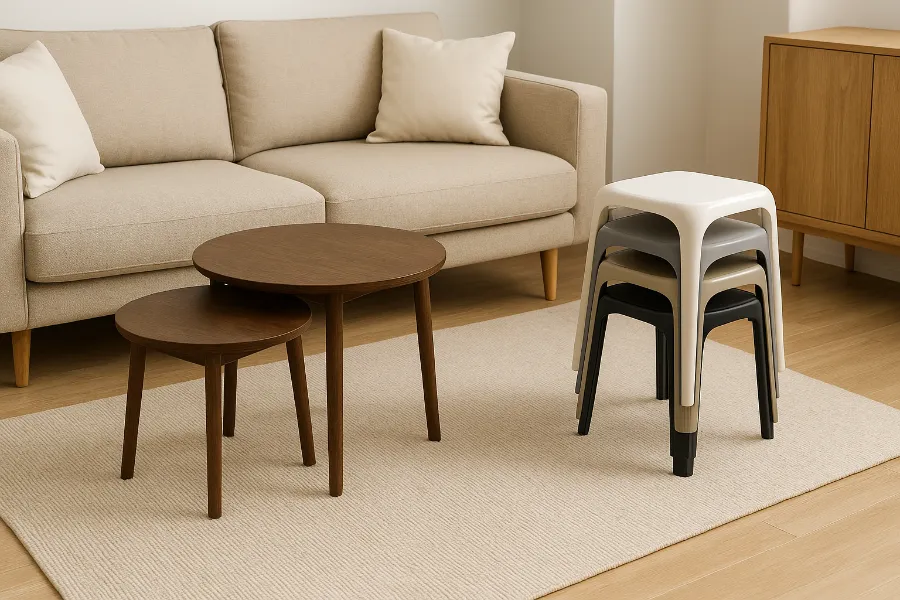
Furniture should serve both function and style. Matching your organizing strategy to your preferred aesthetic makes the space feel cohesive and intentional.
Minimalist Style
Minimalism reduces clutter and focuses on purposeful living. It emphasizes neutral colors, clean lines, and intentional decorating. Minimalism has cultural and artistic roots focused on simplicity and clarity. Hidden storage, wall-mounted furniture, and multipurpose seating all fit naturally into minimalist spaces.
Scandinavian Style
Scandinavian design blends practicality with warmth. It uses wood, soft fabrics, and bright natural light to create inviting but efficient layouts. Storage benches, light wood shelves, and foldable tables support both beauty and function. Rooms feel cozy yet breathable.
Industrial Style
Industrial décor uses exposed metal, raw wood, and open-frame designs. Because many industrial pieces have structural frames rather than bulky forms, they appear visually lighter. Loft beds, steel shelving, and rolling carts fit well with this style.
Modern Compact Style
Modern compact design prioritizes built-in function. Lift-top coffee tables, wall-fold desks, and sleek modular seating help a room change roles smoothly throughout the day.
Small-space design also benefits from maintaining a clean and healthy indoor environment. The U.S. Environmental Protection Agency offers guidance on organizing and improving home air quality and comfort.
Final Thoughts
Maximizing a small space is not about squeezing more things into it, but choosing the right furniture so the room feels open, functional, and personal. With multipurpose furniture, vertical storage, collapsible options, and thoughtful design style selection, even the smallest living spaces can become deeply comfortable and expressive.
FAQs
Space-saving furniture is designed to maximize function in small areas by combining multiple uses or incorporating hidden storage.
Choose multipurpose furniture, use vertical storage, reduce clutter, and keep a consistent color scheme to create visual openness.
Yes, many modern convertible sofas use supportive frames and thicker cushioning for everyday sleeping comfort.
Storage beds and under-bed organization provide major functionality without requiring new furniture purchases.
Loft beds elevate the sleeping area, freeing the floor below for a desk, seating, closet space, or storage.
Quality drop-leaf tables are designed for everyday dining and work, as long as the hinges and supports are sturdy.
Vertical shelving, floating shelves, and modular cube units help organize items while using minimal floor space.
Use hidden storage furniture, store rarely used items out of sight, and keep surfaces clear to maintain visual order.
Modular furniture is made of pieces that can be rearranged, added, or removed to adapt to changing needs.
Not always. Many cost-effective options like foldable desks, bed risers, and cube shelves are budget friendly and widely available.



